There are many beautiful places in the scotland which are charming. Turn around Will not be frustrated.
Scotland
Scotland is a beautiful country well known for its dramatic scenery of mountains and valleys, rolling hills, green fields and forests,
and rugged coastline. While most know about the magnificent scenery of the Highlands, Scotland is beautiful in the Lowlands, islands and the flat lands of the North-East as well. It also has lively and friendly cities, often of great architectural significance, and a rich history and heritage dating back thousands of years with many ancient and historic sites. Other characteristics that attract droves of
visitors include golf (the game was created in Scotland and it has some of the world's best and most famous courses), whisky, family history (millions worldwide are descended from those who emigrated from Scotland when times were tough in the 18th and 19th centuries), hiking, wildlife and winter sports. Around Loch Ness in the north of the Highlands, you can also hunt for the Monster or at least try.
History
Only a little isolated area was christian until the missionary St. Columba arrived from Ireland in 563 ad and founded his monastery on the Hebridean island of Iona. Under his influence christianity spread rapidly and around 800 ad almost the whole of Europe was christian. In that time period the beginning of the The Book of Kells was written on Iona and later on finished in Ireland where it now has a place at Trinity University in Dublin. A
common christian belief made it easier for the peoples to unite and in 843 ad the Picts and the Scots united under Kenneth MacAlpin. The powerful culture of the Picts eventually disappeared. All that remained were the stones with the complicated patterns.Around 890 ad the Vikings started to raid Scotland resulting in the occupation of the Western Isles for 370 years and the Shetlands and Orkneys for almost 600 years. In order to form an alliance against the Vikings, the Britons joined Scotia and when in 1018 the Angles were beaten, Scotland became a united kingdom.
In 1222 ad Alexander the 2nd used the lion for the first time as heraldic animal of Scotland. When his daughter died in 1290, Edward the 1st of England installed a strawman as king and lead a devastating invasion in 1296 that gave him the stone of destiny. Scotland was totally beaten except for William Wallace. He lead an uprise that restored hope for the Scots but he was captured 6 years later and was tortured to death. His successor was Robert the Bruce who formed an army and, against all odds, beat the English on the 23rd of
would last until 1329 before the sovereign state became final. The wars with England however continued.
One
 The year 1371 marked the start for the big dynasty of the house of Stuarts. James the 1st reformed the legal system and founded the first university. James the 3rd married the daughter of king Cristian from Norway and regained Shetland and the Orkneys. James the 4th was less lucky, he made a big mistake which cost the lives of 10.000 Scots during the battle at Flodden Field. The most famous of the Stuarts was Mary who inherited the throne as a baby but was not very successful as a queen. After several affairs she was deposed en put in prison. She managed to escape and flee to England but was captured there and by order of queen Elizabeth 1st killed after 18 years of imprisonment. During Mary’s reign Scotland changed from a Roman Catholic to a Protestant country.
The year 1371 marked the start for the big dynasty of the house of Stuarts. James the 1st reformed the legal system and founded the first university. James the 3rd married the daughter of king Cristian from Norway and regained Shetland and the Orkneys. James the 4th was less lucky, he made a big mistake which cost the lives of 10.000 Scots during the battle at Flodden Field. The most famous of the Stuarts was Mary who inherited the throne as a baby but was not very successful as a queen. After several affairs she was deposed en put in prison. She managed to escape and flee to England but was captured there and by order of queen Elizabeth 1st killed after 18 years of imprisonment. During Mary’s reign Scotland changed from a Roman Catholic to a Protestant country.In 1745 the grandson of James the 7th, prince Charles Edward Stuart, landed secretly on the northwestern shores of Scotland with 7 companions and a promise of French military support which never came. His call to put George the 2nd from the throne was only supported by some clan-chiefs (also knows as the Jacobites), but still he was quite successful. The army of rebels halted only 125 miles from London where it lost its courage en left the inhabitants in panic. At Culloden the army of George the 2nd beat the Jacobites on April the 16th 1746. Bonnie Prince Charlie became the most wanted refugee of the country, but despite the offer of a 30.000 pound reward, he has never been caught.
After the Battle of Culloden things changed dramatically. It was forbidden by law to wear Tartan, play bagpipes and carry arms. The connections between the clans and clan chiefs were broken and an entire way of life ended. The clan-chiefs became feudal lords and the area where they once ruled on behalf of their people now became their property. Where ever land could be turned into money by means of sheep farming, people had to leave. These forced moves of people are also known as the ‘clearances‘ and started around 1760. Even violence was used to get them out of their living-areas, for example in Sutherland. By the time the Highlands were a popular hunting ground during the reign of Victoria, the glens were as empty as they are today.
Site place
You can explore Scotland by boat, on foot along its trails, on scenic train rides, or touring by car, and each will lead to unforgettable experiences. History is everywhere as you tour the castles and fabled battlefields where clans fought, trace the footsteps of legendary kings and queens, or follow literary trails blazed by Robbie Burns and Sir Walter Scott. Another
of Scotland's great attractions is its solitude, with its remote stretches of heather-covered moors; secluded beaches; and wild, romantic mountains, with their deep glens and lochs. Whether you choose vibrant cities, historic towns, or remote moors and islands, you'll find they are all filled with memorable things to see and do.
1. Edinburgh Castle and the Royal Mile
The stone towers and walls of Edinburgh Castle have dominated the Edinburgh skyline since the 13th century. Perched atop black basalt rock, it offers magnificent views of the city and a trip through Scotland's tumultuous history. Highlights are the spectacular Crown Jewels; the famous Stone of Destiny; and St. Margaret's Chapel, built in 1130 and the oldest building in Edinburgh. Enter the castle over a drawbridge across an old moat from the broad Esplanade, where the famous Edinburgh Military Tattoo is held every August. Bronze statues of legendary heroes William Wallace and Robert the Bruce seem to keep watch over the castle gates.
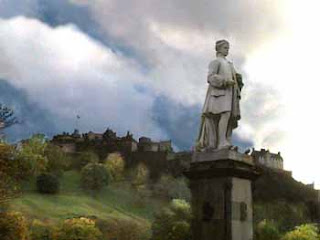 Below, the Royal Mile stretches down the steep escarpment to the elegant Palace of Holyroodhouse, another of Edinburgh's most famous landmarks. Lined by brick townhouses and historic landmarks, the Royal Mile is also filled with small shops, kiltmakers, tearooms, museums, and cafés. Between its tall buildings - some reaching to more than 10 stories on the downhill side - are narrow little alleys, called "winds," that weave between tiny hidden closes.
Below, the Royal Mile stretches down the steep escarpment to the elegant Palace of Holyroodhouse, another of Edinburgh's most famous landmarks. Lined by brick townhouses and historic landmarks, the Royal Mile is also filled with small shops, kiltmakers, tearooms, museums, and cafés. Between its tall buildings - some reaching to more than 10 stories on the downhill side - are narrow little alleys, called "winds," that weave between tiny hidden closes. 2. Loch Lomond
Idyllic Loch Lomond, just a short drive northwest of Glasgow, is Britain's largest lake and, according to author Walter Scott, "The Queen of Scottish Lakes." With plentiful trout, salmon, and whitefish as a lure for anglers; the loch for watersports; and plenty of open space for hikers; this beautiful corner of Scotland is also a favorite day trip from the city. Boat trips are always popular, as are lakeside rambles and longer treks up majestic Ben Lomond (3,192 feet), with its spectacular views across the Trossachs National Park. Loch
Lomond is a good first stop on a tour from Glasgow along the Western Highland Way through the Argyll countryside to Fort William. Savor the romance of a Scottish country estate at Cameron House at the south end of the loch, where you can enjoy a wide range of outdoor activities that include its lakeshore golf course.
3. Cruising Loch Ness and the Caledonian Canal
Think of Loch Ness, and you'll probably picture the mythical monster that, according to legend, has made this 23-mile-long loch home for countless centuries. The largest body of water in Scotland's Great Glen, Loch Ness is part of a waterway connecting the east and west coasts of Scotland. It and three other lochs are joined together by the Caledonian Canal, which you can cruise on short excursions, or on a six-hour voyage from one end to the other, through the canal locks that adjust the varying water levels.
The canal and each of the lochs is surrounded by some of the most beautiful highland scenery, but no part is more scenic than Loch Ness itself, with the romantic ruins of
Urquhart Castle on its hillside above the water. The center of many ancient myths, the 12th-century castle fell victim to a fire some 500 years later. The best views of the castle are from the water, and you can arrive by boat or drift past on a Loch Ness cruise. Fueling the Nessie legend with exhibits and accounts of sightings, Loch Ness Exhibition at Drumnadrochit Hotel also has interesting information on the geological formation of Loch Ness and the surrounding area. The castle, the canal, and Loch Ness are easily accessible from Inverness. 4. The Royal Yacht Britannia, Edinburgh
For more than 40 years, the Royal Yacht Britannia was a floating royal residence, traveling more than 1,000,000 miles around the world. Glimpse the life of the royal family, their guests, and the crew as you explore Britannia's five main decks with an audio tour, visiting
the Bridge, State Apartments and Royal Bedrooms, Crew's Quarters, and Engine Room. You can also see the Rolls-Royce Phantom V that used to travel onboard, and stop for tea and cakes in the Royal Deck Tea Room.
5. Isle of Skye and the Inner Hebrides
The largest of Scotland's inner isles, Skye is especially popular with birders, ramblers, and nature lovers. Its wild, romantic mountain scenery is marked by green valleys, caves, lonely glens, sandy beaches, and rushing waterfalls - quite a remarkable variety for an island just 50 miles long and never more than 15 miles wide. The island has the remains of primeval oak forests, as well as an abundance of wildlife that includes otters, seals, and at least 200 species of birds. Getting to Skye is easy, as it's connected to the mainland via a bridge. You can also get here by ferry.
The other islands in the Inner Hebrides include, among others, Islay, Jura, Mull, Raasay, Staffa, and Iona. Getting to Iona is a bit more complicated, requiring two ferry rides, but tremendously rewarding. This is considered Scotland's "Cradle of Christianity" as it was here that St. Columba arrived from Ireland in the 6th century to spread the gospel. A 12th-century church, atmospheric ruins of an abbey, and a carved stone memorial from the 10th century are among its attractions, along with Scotland's oldest Christian cemetery, with graves of more than 60 Scottish kings, including Macbeth.
6. Stirling Castle
The palace of James V and childhood home of Mary Queen of Scots, Stirling Castle is one of the best-preserved Renaissance buildings in the UK. Its grand halls and rooms are carefully restored and furnished to its 1500s appearance, even to painstaking reproductions of its tapestries. Costumed interpreters interact with visitors to bring the castle and its history to life, and History Hunter programs on weekends are designed for young explorers.
Ideally situated between Edinburgh and Glasgow, Stirling is famous for the Battle of Bannockburn, which saw Robert the Bruce defeat the English invaders in 1314, as well as the Battle of Stirling Bridge, a victory for Scottish independence secured by the legendary William Wallace. The splendid Bannockburn Heritage Centre offers excellent displays and exhibits regarding this important era. Between Stirling and Bridge of Allan stands the majestic Wallace Monument, a spectacular 246-step tower with incredible views of the area, as well as artifacts said to have belonged to the great Wallace himself.
7. Kelvingrove Art Gallery and Museum, Glasgow
Since a fire devastated much of the work of Charles Rennie Mackintosh at the Glasgow School of Art, Kelvingrove Art Gallery and Museum has become the primary destination for admirers of the Glasgow Style, a distinctive part of the Arts & Crafts movement and Art Nouveau styles of the early 20th century. Created and opened shortly before the fire, the Charles Rennie Mackintosh and the Glasgow Style Gallery includes several entire
Mackintosh rooms, as well as works by other prominent artists of the movement. Along with other notable treasures - a Van Gogh portrait, Bronze Age tools and jewelry from Arran and Kintyre, a 1944 Mark 21 Spitfire, and a magnificent 1901 organ used for daily free concerts - one of the museum's most popular exhibits is Salvador Dali's Christ of St. John of the Cross.
8. Golf at St. Andrew
The Scots lay claim to many inventions, including the bicycle, postage stamps, telephones, and steam engines. But perhaps their most enduring invention is the game of golf. One of the lifetime dreams of dedicated golfers is to play the much revered Royal and Ancient Golf Club located in historic St. Andrews and just 12 miles southeast of Dundee. Founded in 1750 and recognized internationally as golf's ruling body, St. Andrews regularly hosts the
famous British Open at one of its many 18-hole courses, the most famous of which is the par-72 Old Course running alongside the rugged coast. Although tee times are often reserved six months in advance, some are kept available by lottery two days in advance for those who do not have advance reservations. Worth visiting are the majestic old Clubhouse and the British Golf Museum, which documents the history of the "home of golf" from the Middle Ages to the present day.
More Must-See Destinations in Scotland
As you tour around Scotland, there are places you'll want to spend more time, digging deeper into the country's fascinating culture and seeing more of its top attractions. You could spend an entire vacation in Edinburgh without seeing everything, with a full day exploring just its castle, or in Glasgow, with its art treasures and music scene. Both lovely Loch Lomond and fabled Loch Ness have more things to do around their shores, and the Scottish Highlands are filled with places to pursue outdoor sports. There's more than golf around St. Andrews, and you can island-hop through the Hebrides by ferry and bus.
Its the nice Scotland. so u can travel this place.
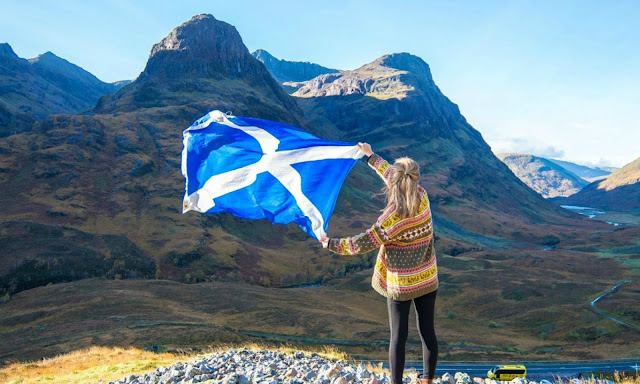
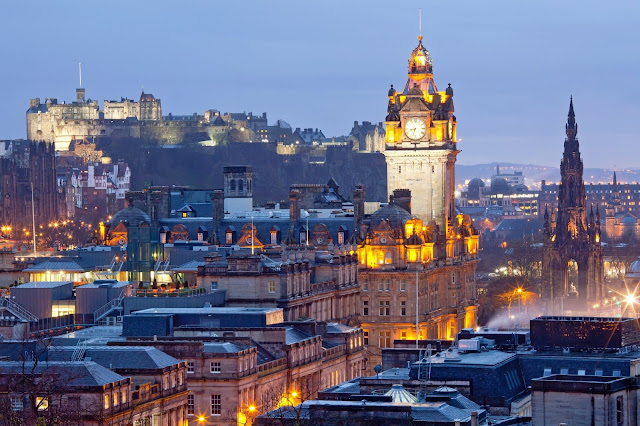
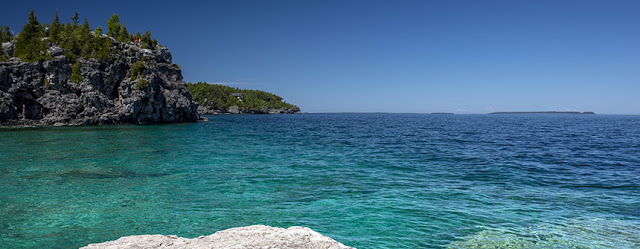
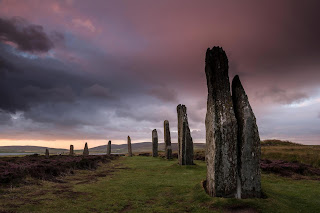

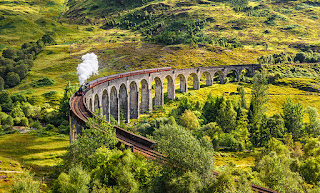

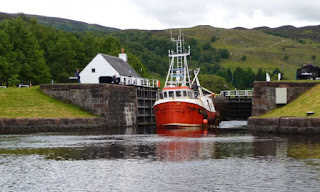

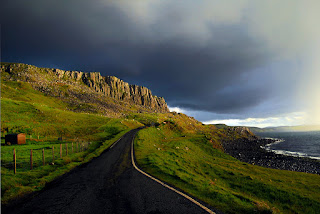
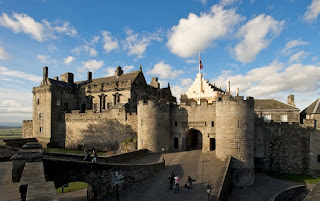

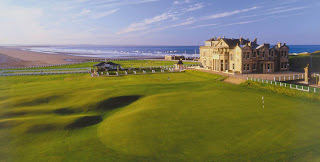
Comments
Post a Comment